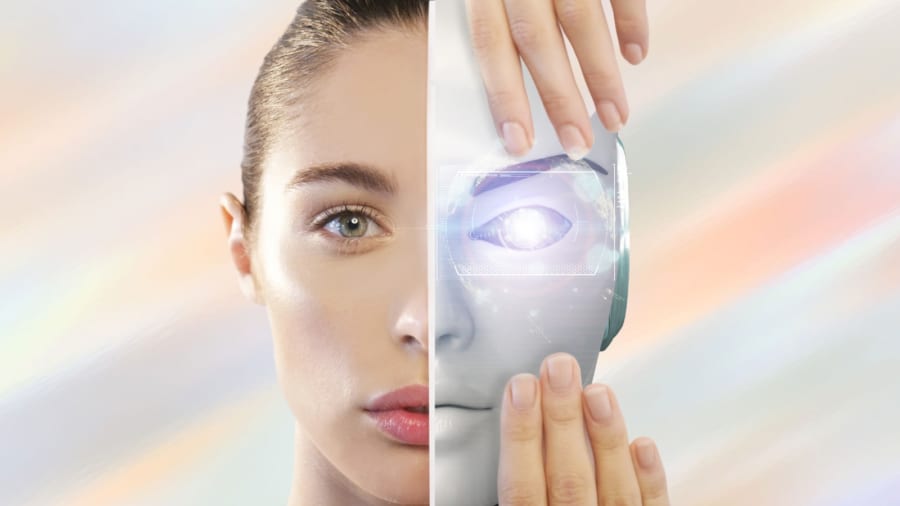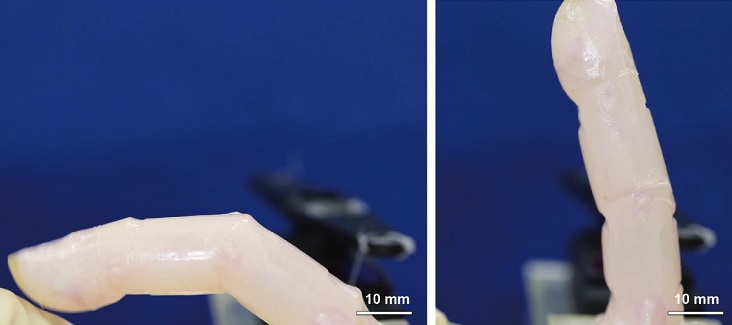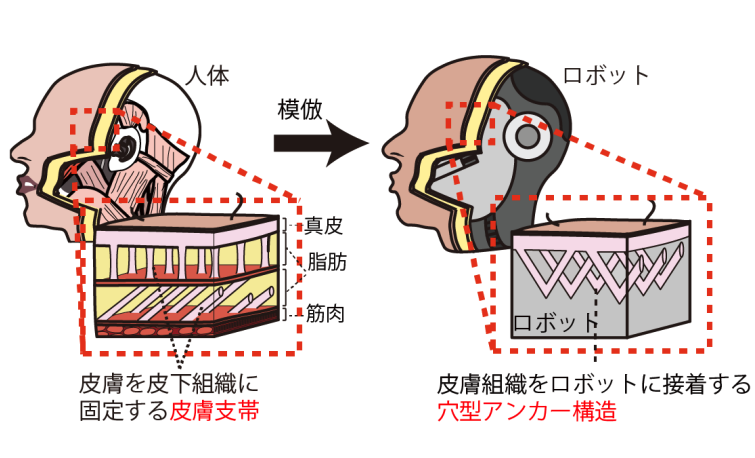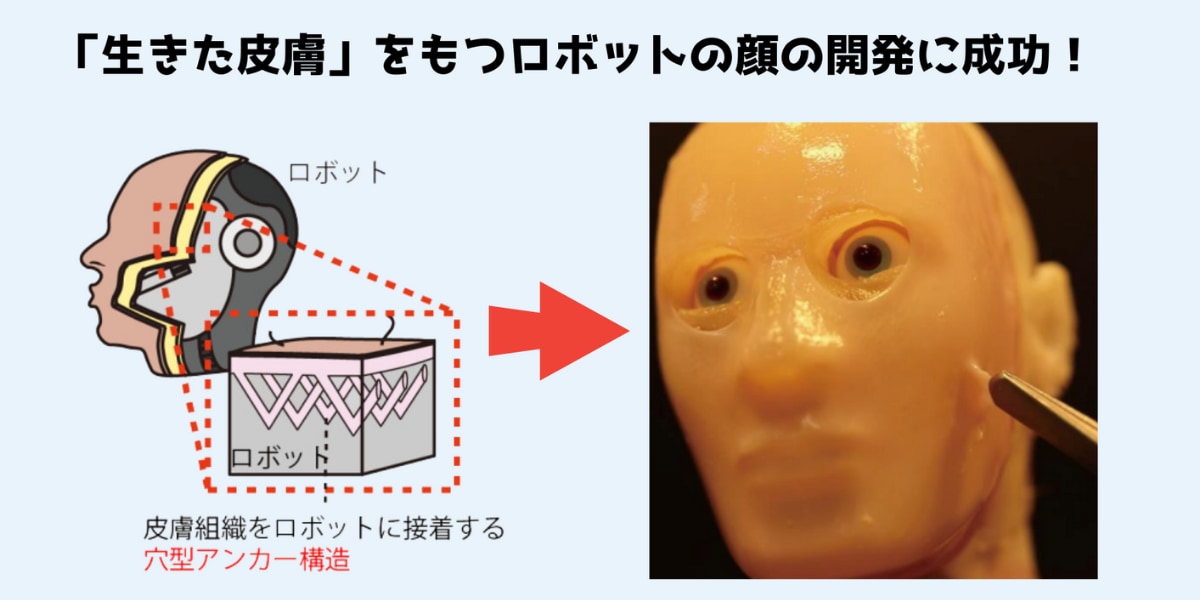Successfully developed a robot face with “living skin”!
The University of Tokyo recently succeeded in developing a facial robot with living skin using “cultured skin” made from human cells.
The main purpose of this research was to establish a method to stably fix the cultured skin to the bare skin of the robot.
This allowed the movement of the robot and the skin to be linked, and the cultured skin to create a grinning “smile”.
How on earth did they attach the robot to the cultured skin?
Details of the research were published in the scientific journal “Cell Reports Physical Science” on June 25, 2024.
Robot skin from “silicon” to “cultured skin”
Many humanoid robots that imitate real humans have been made all over the world.
As you may have seen, they already have realistic skin.
You can actually use it to laugh and wink.

However, these materials are all basically all made from silicone rubber.
Silicone rubber is soft and stretchy, making it a valuable material for building robots.
But on the other hand, silicone rubber is ultimately an inorganic material, and is completely different from living skin derived from cells.
As long as silicone rubber is used, it will not have a more realistic skin texture, self-repairing functions, or human-like abilities such as sensing, heat release, and sweating.
The research team believes that it is necessary to give robots more realistic skin, especially now that “robots are beginning to work in a human-like manner.”

So the team has been working on an approach to turn cultured skin made from human cells into robot skin.
Cultured skin is a living artificial skin made by growing human or other animal skin cells outside the body.
Cultured skin is basically used in skin research, drug discovery testing, and as a graft material for severe burns and wounds, but it is also thought to be ideal for robot skin.
Research on cultured skin has actually progressed quite a bit, and the team had already succeeded in developing a finger-shaped robot covered in cultured skin in 2022.

However, a major challenge remains.
That is, how to establish a method for stably attaching the cultured skin to the robot’s bare skin.
Because the bare skin of a robot is an inorganic machine, if cultured skin is simply attached to it, it will slip and easily fall off.
Furthermore, simply attaching the cultured skin will not work well with the robot’s movements, making it impossible to reproduce the rich expressions of the face.
The team therefore took on this challenge by observing how human skin adheres to muscle tissue.
As can be seen from the fact that human skin does not slip between itself and the muscle layer underneath, the skin is smoothly adhered to the subcutaneous tissue by a surface.
The key to this is the “cutaneous retinaculum.”
The cutaneous retinaculum is a fibrous tissue made mainly of collagen that spreads under the skin and plays a role in fixing the skin in place.
The cutaneous retinaculum also plays a role in transmitting muscle movement to the skin, and is essential for the smooth formation of facial expressions by facial muscles, especially in the face (see the left side of the figure below).

Inspired by the mechanism of the retinaculum, the team devised a new method for adhering cultured skin to the bare skin of a robot.
This method is called the “hole anchoring method.”
In this method, many V-shaped holes are first opened on the surface of the robot’s face (see the right side of the image above).
Cultured skin is then poured into the V-holes and allowed to gel inside, firmly “anchoring” the cultured skin to the robot’s bare skin.
Using this method, the team succeeded in creating a facial robot with cultured skin stably attached.

They also tested whether the robot’s power was being properly transmitted to the cultured skin.
As a result, they were able to successfully create a “smile” by transmitting the power of the robot’s motor to the cultured skin via hole-type anchors.
See what it looks like here.
As the research is still in the early stages, as you can see, the robot’s face is still quite creepy.
However, with further improvements, we will be able to create robots that look more natural and have the same biological functions as real humans.
The researchers also say that in addition to applying their findings to robots, they could be used in a variety of fields, such as cosmetics development, drug efficacy testing and as a transplant material.
At the moment, many people may think that this is not right, but the technology to create robots with skin seems to be steadily progressing.
The day may be approaching when it will be indistinguishable between real human and robot faces.
Nazology Successfully Develops Robot Face with “Living Skin”!

